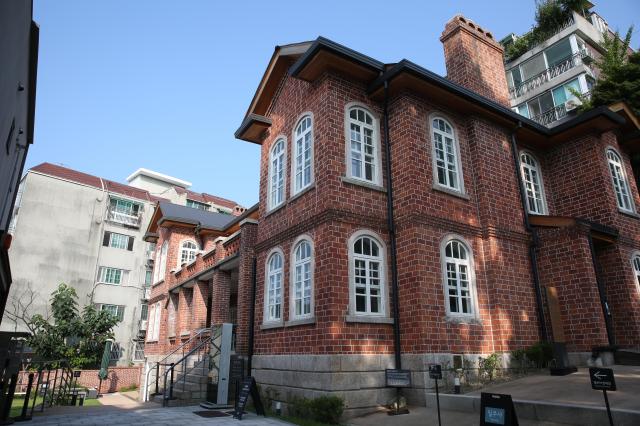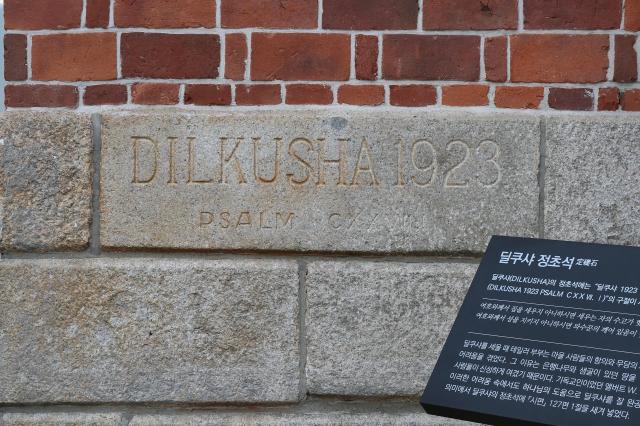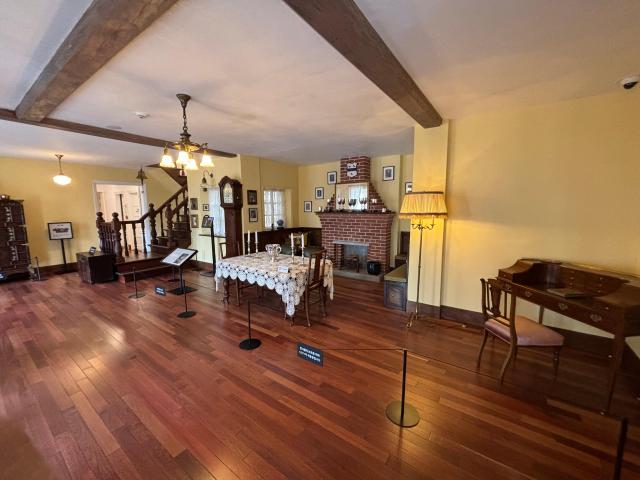
SEOUL, August 14 (AJU PRESS) - High on a hill in Jongno District, overlooking central Seoul, stands Dilkusha, a two-story Western-style brick house with a storied past. Over the past century, this house -- whose name means "Heart's Delight" in Persian -- has been called many names, including the "Western people's home," the "red brick house," and the "ghost house." Throughout its existence, Dilkusha has borne witness to Korea's liberation, the Korean War (1950~1953), and the rapid transformation of Seoul.
Dilkusha was built by Albert W. Taylor, a Nevada-born merchant involved in Korea's mining industry, and his wife and British actress Mary L. Taylor. The couple discovered the site for their future home during a walk in central Seoul, near a massive ginkgo tree. This land originally belonged to General Gwon Yul of the Joseon Dynasty (1392~1910), a key figure in Korea during the Japanese invasions (1592~1598).
Albert, who was also an Associated Press (AP) correspondent, became an unexpected participant in Korea's fight for independence. On Feb. 28, 1919, the day before the March First Movement -- a nationwide protest against Japanese colonial rule (1910~1945) -- his son, Bruce Taylor, was born at Yeonsei University's Severance Hospital. At the time, the hospital served as a base for independence activists.

As Bruce was born, Japanese forces raided the hospital to prevent activists from printing and distributing materials. Nurses concealed copies of the Korean Declaration of Independence under the newborn's bedding, successfully hiding them from the soldiers.
When Albert picked up his son for the first time, he who was fluent in Korean, recognized the importance of the hidden document. He arranged for his brother to smuggle it out, ensuring it reached the AP office, where it was reported to the world. Albert also brought global attention to the atrocities committed by Japanese forces in Korea through his reports.
The Taylors lived at Dilkusha for around 20 years before being expelled by the Japanese government in 1942, following the Japanese attack on Pearl Harbor in 1941. Though Albert longed to return to Seoul, he did so only in ashes, which Mary brought back in 1948. His remains were buried at the Yanghwajin Foreign Missionary Cemetery, approximately six kilometers (3.7 miles) from Dilkusha.
After Mary returned to California, the house stood empty for decades, and its rightful ownership was unclear. While much of Seoul was destroyed during the Korean War, Dilkusha remained largely intact, with only minor damage from bullets and shrapnel.

Shim explained that the house was once owned by a politician who had illegally amassed wealth. The government seized the property in 1963, but it was left neglected and soon became a shared living space, with multiple families occupying its rooms.
Dilkusha remained largely forgotten until 2005, when Bruce, who had fond memories of his childhood there, asked the Korean government to help him locate the house. In 2006, Bruce, then in his late 80s, returned to his boyhood home for the first time since his family's expulsion.
When Bruce died in 2015, his daughter donated approximately three thousand family relics, including heirloom ornaments, over a two-year period. The Korean government then undertook efforts to restore Dilkusha to its former state.

Today, the house's living room has been faithfully recreated based on old photographs, complete with a grandfather clock, armchairs, and a table. Other rooms have been converted into museum spaces displaying personal items from the Taylor family.
According to Shim, about three hundred people visit Dilkusha daily on weekends. "We see many families with young children visiting on weekends, while hikers and travelers tend to come on weekdays," Shim said. "The recognition of this historic site has clearly grown, as evidenced by the steadily increasing number of visitors."
Copyright ⓒ Aju Press All rights reserved.


View more comments